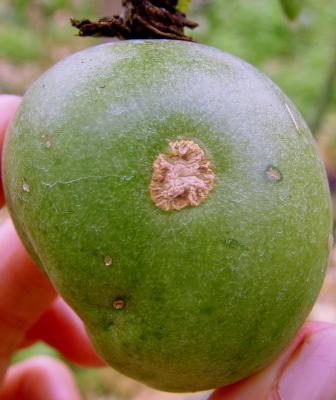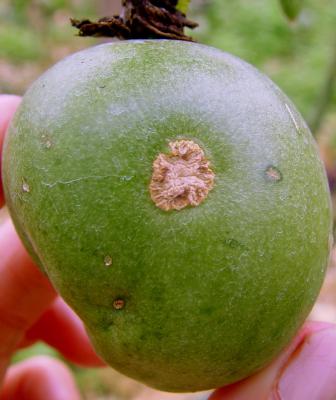

Broad mite or yellow tea mite (Polyphagotarsonemus latus)
It is the most important mite pest of passion fruit in Kenya. Broad mites are tiny (0.1-0.2 mm long) and cannot be seen with the naked eye, and are even difficult to detect with a hand lens. An attack by the broad mites can be detected by the symptoms of damage.
Their feeding produces discolouration, necrosis of tissues and deformation. Initial attack occurs on stems of terminal shoots and young terminal leaves. Attacked young leaves are stunted, deformed (slender, twisted or crumpled), fail to elongate and finally may wilt and dry. Stems of terminal shoots may become slightly swollen, roughened or russeted. As a result the growth of the plant is affected and flower production reduced causing considerably yield reduction. A bronzed dusty appearance may occur on affected plant parts. Attacked fruits become deformed and show white to tan or brown scars on the skin. This damage usually does not affect the internal quality of fruits but affect their market value. Severely attacked fruits may fall. Symptoms remain for a long period of time after control.
- Broad mites are attacked by predacious mites. Phytoseiulus persimilis is not very much attracted to broad mites. Amblyseius spp. are better predators of broad mites, in particular A. californicus is used for control of broad mites in different parts of the world.
- Broad mites can be effectively controlled with sulphur sprays. However, sulphur is toxic to predatory mites and can have phytotoxic effects on young leaves and shoots at high sulphur dosages and when applied during hot weather.
